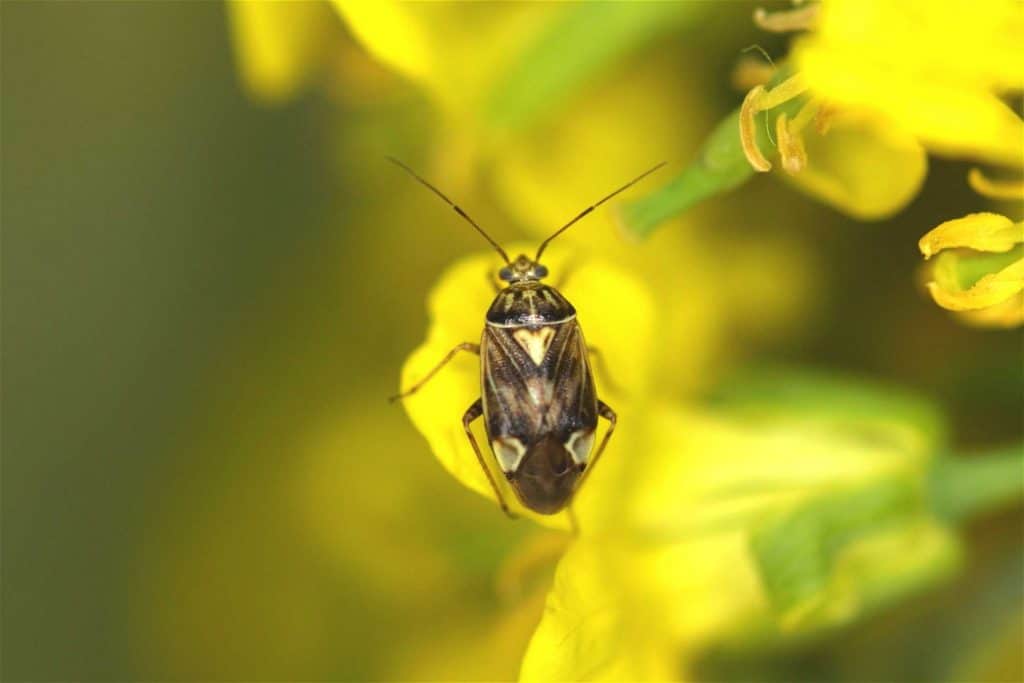Key Result
Insecticidal control of lygus at early growth stages in canola is not a prudent strategy. Early-season populations of lygus bugs are not pests – their feeding has some benefits to canola plants. Where growing conditions allow compensation for bud damage to occur, lygus bugs present in canola during bud through flowering stages do not pose a threat to yield.
Project Summary
Overview
Canola’s ability to compensate for herbivore damage is essential information for the management of lygus bugs.
In Alberta, Jones’ research team studied plant architecture, seed yield and other vegetative and reproductive attributes potentially involved in compensation in two experiments, manipulating density and duration of infestation of lygus bugs during the bud through bloom period of Brassica napus.
After seedling emergence, plants were individually caged and density treatments (0, 2, 4, 6 and 10 lygus bugs / cage) or duration treatments (0, 5, 10, 15, and 20 days, all with four bugs / cage) were applied at bud. At harvest, plants were retrieved for measures of stature and feeding damage. Yields were measured by seed size.
Results
Density experiments showed that plants became more robust with increasing lygus density. Canola stem diameter, biomass, and branching were significantly increased by lygus treatments. Total seed weight increased at Beaverlodge in 2000: seed production in high-density treatments more than doubled (221%). In all other cases, seed weight was not significantly affected, either in total or by size class. No negative treatment effects on plant productivity were found.
Duration treatments did not affect stem diameter, height, biomass, or total seed yield. Lygus-treated plants produced 23% more buds than controls, however. Greatest numbers of buds were produced after a 5-day exposure. Duration experiment small seed weight increased significantly (38% overall) in a stepped manner: small seed production increased at five days and again at 20. Damage to plants was significant: bud and pod abscission increased after 15 days exposure possibly due to a decline in the ability of plants to produce new buds. Drought is implicated in these plant responses as an additive factor that did not interact with lygus treatments.
Conclusions
These induced defensive responses to lygus feeding were agronomically positive. Yield losses were not found although yield increases sometimes occurred. Bud “blast” was not a useful indicator of potential yield since losses in buds and pods occurred both when yields were improved and when no changes in yield could be detected.
The research team conclude that insecticidal control of lygus at early growth stages in canola is not a prudent strategy. In these experiments, plants with lygus bugs were more productive. Where growing conditions allow compensation for bud damage to occur, lygus bugs present in canola during bud through flowering stages do not pose a threat to yield. Early-season populations of lygus bugs are not pests. They have been found to be agronomically beneficial, as their feeding benefits canola plants through the release of apical dominance.






